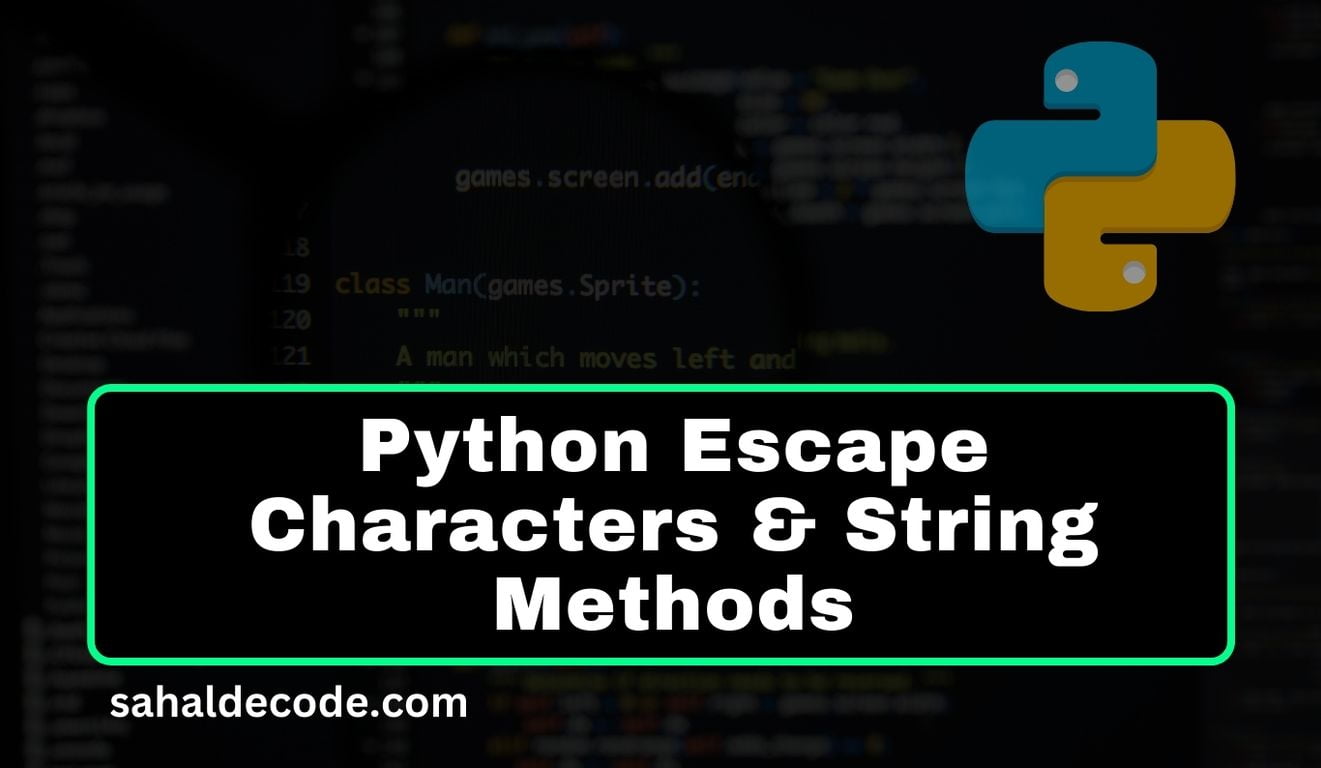Unveiling Their Power for String Manipulation
Are you eager to level up your Python programming skills? Look no further! In this comprehensive guide, we’re delving into the fascinating world of Python escape characters. Get ready to discover how these special characters can empower your string manipulation tasks. From understanding their basics to exploring practical examples, this guide has got you covered.
Getting to Know Python Escape Characters
Escape characters are an essential component of string handling in Python. They allow you to include special characters in strings that would otherwise be challenging to incorporate. Escape characters are denoted by a backslash (\) followed by the character you want to insert. Let’s dive into the intricacies of escape characters and how they can be harnessed to your advantage.
Basic Usage and Common Escape Characters
At the heart of escape characters lies their ability to insert characters that have a special meaning in Deep Dive into Python Strings. Here are some frequently used escape characters:
| Code | Result |
|---|---|
| \’ | Single Quote |
| \\ | Backslash |
| \n | New Line |
| \r | Carriage Return |
| \t | Tab |
| \b | Backspace |
| \f | Form Feed |
| \ooo | Octal value |
| \xhh | Hex value |
Examples of Python Escape Characters
Let’s explore these escape characters in action:
# Newline and tab
print("Hello\nWorld")
print("Python\tProgramming")
# Quotation marks
print("She said, \"Hello!\"")
print('He exclaimed, \'Wow!\'')
# Literal backslash
print("C:\\Users\\Username")
In the first example, \n creates a new line between “Hello” and “World”. In the second example, \t inserts a tab between “Python” and “Programming”. The third and fourth examples showcase the use of escape characters to include quotation marks in strings. Finally, the last example demonstrates how to use \\ to insert a backslash.
Escape Characters and Raw Strings
Python also supports raw strings, which are particularly useful when dealing with regular expressions and file paths. In a raw string, escape characters are treated as literal characters, allowing you to input paths without the need for additional backslashes. Here’s an example:
raw_path = r"C:\Users\Username\Documents"
print(raw_path)The r prefix before the string indicates that it’s a raw string.
Python – String Methods
| Method | Description |
|---|---|
| capitalize() | Converts the first character to upper case |
| casefold() | Converts string into lower case |
| center() | Returns a centered string |
| count() | Returns the number of times a specified value occurs in a string |
| encode() | Returns an encoded version of the string |
| endswith() | Returns true if the string ends with the specified value |
| expandtabs() | Sets the tab size of the string |
| find() | Searches the string for a specified value and returns the position of where it was found |
| format() | Formats specified values in a string |
| format_map() | Formats specified values in a string |
| index() | Searches the string for a specified value and returns the position of where it was found |
| isalnum() | Returns True if all characters in the string are alphanumeric |
| isalpha() | Returns True if all characters in the string are in the alphabet |
| isascii() | Returns True if all characters in the string are ascii characters |
| isdecimal() | Returns True if all characters in the string are decimals |
| isdigit() | Returns True if all characters in the string are digits |
| isidentifier() | Returns True if the string is an identifier |
| islower() | Returns True if all characters in the string are lower case |
| isnumeric() | Returns True if all characters in the string are numeric |
| isprintable() | Returns True if all characters in the string are printable |
| isspace() | Returns True if all characters in the string are whitespaces |
| istitle() | Returns True if the string follows the rules of a title |
| isupper() | Returns True if all characters in the string are upper case |
| join() | Joins the elements of an iterable to the end of the string |
| ljust() | Returns a left justified version of the string |
| lower() | Converts a string into lower case |
| lstrip() | Returns a left trim version of the string |
| maketrans() | Returns a translation table to be used in translations |
| partition() | Returns a tuple where the string is parted into three parts |
| replace() | Returns a string where a specified value is replaced with a specified value |
| rfind() | Searches the string for a specified value and returns the last position of where it was found |
| rindex() | Searches the string for a specified value and returns the last position of where it was found |
| rjust() | Returns a right justified version of the string |
| rpartition() | Returns a tuple where the string is parted into three parts |
| rsplit() | Splits the string at the specified separator, and returns a list |
| rstrip() | Returns a right trim version of the string |
| split() | Splits the string at the specified separator, and returns a list |
| splitlines() | Splits the string at line breaks and returns a list |
| startswith() | Returns true if the string starts with the specified value |
| strip() | Returns a trimmed version of the string |
| swapcase() | Swaps cases, lower case becomes upper case and vice versa |
| title() | Converts the first character of each word to upper case |
| translate() | Returns a translated string |
| upper() | Converts a string into upper case |
| zfill() | Fills the string with a specified number of 0 values at the beginning |
External Resources for Further Learning
To deepen your knowledge of Python escape characters, consider exploring the following resources:
- Python Official Documentation on String Literals
- Real Python’s Guide to Escape Characters
- GeeksforGeeks Tutorial on Python Escape Characters
Transitioning to Enhanced String Manipulation
As you become more acquainted with escape characters, you’ll find that they are your allies in crafting versatile and readable strings. Transitioning to using escape characters in your code allows you to conquer challenges related to special characters and formatting.
With each new concept you embrace, remember that practice is key. Create your own Python scripts and experiment with different escape characters. Don’t hesitate to refer back to this guide and the provided examples whenever you need a refresher.
In Conclusion, Python escape characters are invaluable tools in your programming arsenal. They enable you to insert special characters and symbols into your strings, enhancing the flexibility and readability of your code. As you continue your programming journey, keep building on this knowledge to become a proficient Python coder.
So there you have it—a comprehensive overview of Python escape characters. Armed with this knowledge, you’re ready to tackle string manipulation challenges and take your Python skills to new heights.
Happy coding!










